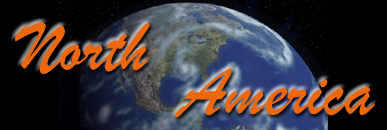

Text and photos courtesy of Michelle Mock
16th Century
Through the 16th Century, Spain sent many explorers to America. Ponce de León discovered Florida. Nuñez de Balboa crossed the Isthmus of Panama and found the Pacific Ocean.
In 1510, the Spanish writer Garci Ordoñez de Montalvo wrote a novel about a mysterious island ruled by Amazon women. The queen was named Califia. This island, called "California" was filled with gold and jewels. It is said that the state of California was named after the island in that novel. It is possible that the novel inspired the conquistadors (like Hernando Cortés) to set sail in search of these treasures. The Spanish conquerors naturally came into conflict with the Aztecs of Mexico and the Incas of Peru. Unfortunately for these native cultures, the Spanish horses, cannons and other weapons were much more powerful and those civilizations were destroyed.
In 1534, Jacques Cartier from France reached the Gulf of St. Lawrence. In 1535, he discovered the St. Lawrence river and set sail to Stadacona (now Québec City), where the natives referred to it as "kanata" ("village" in Iroquoian). Cartier misinterpreted it as the name of the entire region, forever cementing the name "Canada". Eventually, Cartier reached Hochelaga (present-day Montréal).
In 1548, silver was discovered in Mexico (also in Peru, South America). By 1560, silver became the chief export from the Americas to Spain.
Further to the east, in Florida, the French and Spanish were fighting (1562-1565) resulting in the French colony being destroyed by the Spaniards. 1562 was also the year that John Hawkins made his first slave trade voyage to Hispaniola (Haiti). The very first slaves had been brought from Africa in 1510.
It wasn’t long before Spain had serious competition in the New World. In 1572, Sir Francis Drake, an English navigator, attacked Spanish ports in America. In 1579 he claimed New Albion (what we now call California) for England. Searching for the Norwest Passage to Asia, Martin Frobisher attempted 3 expeditions, exploring Baffin Island. Sir Humphrey Gilbert, an English navigator, had been granted a patent to found colonies in North America. In 1584, Englishman Walter Raleigh discovered and annexed Virginia. Between 1585 and 1587, another English explorer, John Davis, explored the Davis Strait.
| Home | Contact Us | Credits | Sitemap |
© 2006 - Imagiverse Educational Consortium